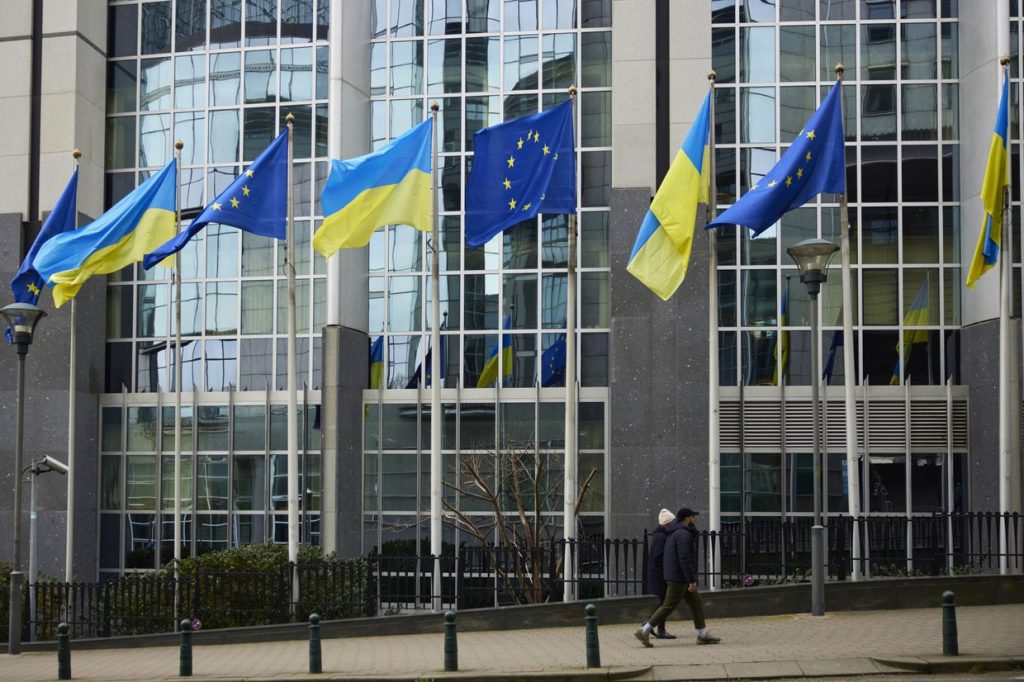The European Union is planning to provide financial support to Ukraine by using profits from frozen Russian assets. The first tranche of this revenue is expected to arrive in Kyiv in the summer, according to EU Sanctions Envoy David O’Sullivan. The EU Council agreed to allocate between 2.5 billion and 3 billion euros annually for Ukraine’s military needs, with most of it coming from the frozen Russian sovereign assets. The legal framework for transferring the funds is still in progress, but O’Sullivan hopes that a decision will be made in the next few weeks. The EU is committed to using these assets for Ukraine’s benefit, whether for military procurement or other needs.
The decision to use windfall profits generated by frozen Russian assets for Ukraine was made by the EU as an alternative to seizing the assets outright. While the US had proposed seizing the assets, the EU was more cautious due to legal and fiscal concerns. Instead, the EU proposed using profits from the frozen assets to aid Ukraine, with a focus on military procurement. In March, the European Commission proposed using 90% of the funds for weapons purchase for Ukraine and allocating the remaining 10% to the EU budget to support Ukraine’s defense industry. After weeks of debate, EU ambassadors reached a political agreement on this proposal on May 8.
The situation in Ukraine continues to escalate, with Russia increasing pressure along the front and carrying out aerial attacks on population centers and critical infrastructure. In response, Ukraine’s Western partners and other allies have frozen around $300 billion in Russian assets, with the majority held in a Belgium-based financial services company called Euroclear. The decision to use these frozen assets to support Ukraine’s defense needs comes at a critical time as the conflict with Russia shows no signs of abating. The EU’s commitment to providing financial support to Ukraine reflects the ongoing solidarity and cooperation between Western allies in response to Russian aggression.
While the exact timing of when the first tranche of frozen asset revenue will be transferred to Ukraine remains uncertain, O’Sullivan indicated that it could happen in the summer. The EU is working on finalizing the legal framework for transferring the funds and hopes to make a decision in the coming weeks. The funds from the frozen assets, which were seized at the start of the full-scale invasion by Russia in 2022, are expected to provide much-needed support to Ukraine as it continues to face aggression from Russia. As Kyiv grapples with mounting security challenges and the humanitarian impact of the conflict, international support from the EU and other allies is crucial in helping Ukraine defend its sovereignty and security.
In conclusion, the decision by the EU to allocate profits from frozen Russian assets to support Ukraine’s military needs reflects a commitment to standing with Kyiv in the face of Russian aggression. The ongoing conflict in Ukraine has led to significant humanitarian and security challenges, and the financial support from the EU will help bolster Ukraine’s defense capabilities. As the situation in Ukraine continues to evolve, with Russia escalating its attacks, the support from Western allies is crucial in ensuring Ukraine’s security and sovereignty. The arrival of the first tranche of frozen asset revenue in the summer will provide much-needed resources for Ukraine’s military procurement and defense efforts, underscoring the importance of international cooperation in responding to the ongoing crisis in the region.


